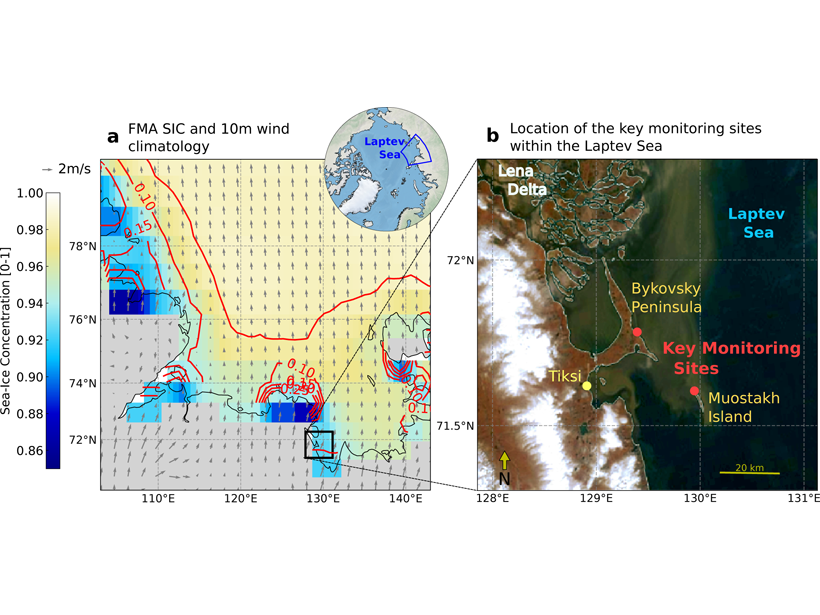Source: Geophysical Research Letters
The Arctic is warming more rapidly than any other region on earth. The increased temperatures lead to decreased sea-ice coverage both in concentration and in duration. This has a profound effect on the coastal margins of the Arctic as they are subject to warmer air temperatures and exposed to more ocean waves that act to thaw the previously frozen permafrost soils. The coastal erosion of permafrost releases vast amounts of previously stored carbon that then may exacerbate climate change thereby creating a vicious cycle.
Key observational monitoring sites in the Laptev Sea of the Arctic have been maintained for almost 30-years and offer a rare insight into how coastal erosion rates vary in response to regional drivers. Nielsen et al. [2020] find that most of the coastal erosion variability can be attributed to changes in the length and concentration of the winter sea ice coverage as well as changes in the large-scale atmospheric wind and air temperature patterns associated with the Arctic Oscillation climate mode.
Somewhat paradoxically, this is promising news for the relatively coarse-resolution Earth System Models (ESM) and that have largely neglected the role of Arctic coastal erosion in the carbon cycle. With typical grid scales of 100s of kilometers, ESMs are inherently better equipped to improve their representation of the large-scale drivers of the Arctic climate variability rather than the small-scale features of the coastal erosion itself.
Citation: Nielsen, D. M., Dobrynin, M., Baehr, J., Razumov, S., & Grigoriev, M. [2020]. Coastal erosion variability at the southern Laptev Sea linked to winter sea ice and the Arctic Oscillation. Geophysical Research Letters, 47, e2019GL086876. https://doi.org/10.1029/2019GL086876
—Janet Sprintall, Editor, Geophysical Research Letters
Text © 2020. The authors. CC BY-NC-ND 3.0
Except where otherwise noted, images are subject to copyright. Any reuse without express permission from the copyright owner is prohibited.

